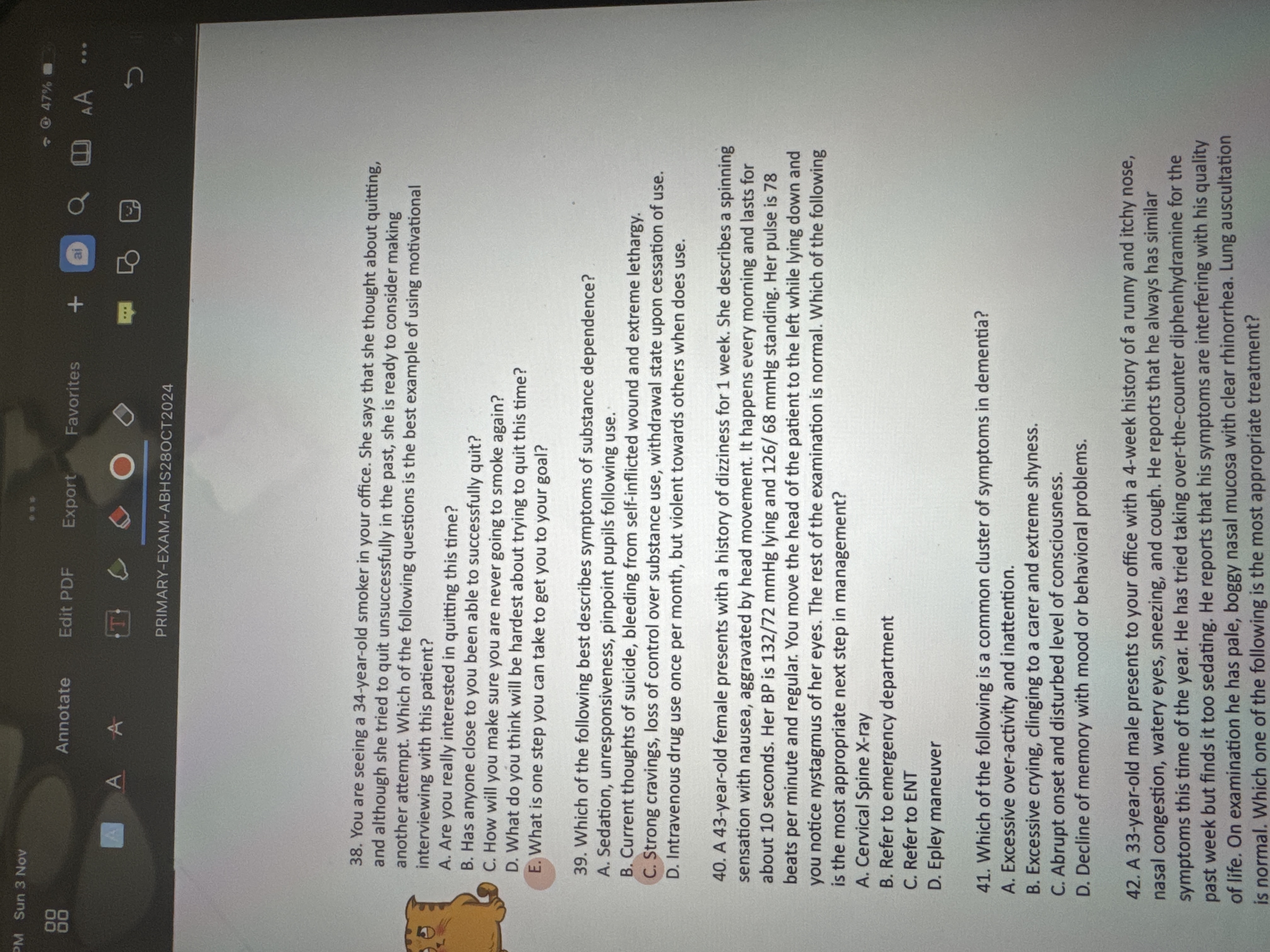You are seeing a 34-year-old smoker in your office. She says that she thought about quitting, and although she tried to quit unsuccessfully in the past, she is ready to consider ma... You are seeing a 34-year-old smoker in your office. She says that she thought about quitting, and although she tried to quit unsuccessfully in the past, she is ready to consider making another attempt. Which of the following questions is the best example of using motivational interviewing with this patient? A. Are you really interested in quitting this time? B. Has anyone close to you been able to successfully quit? C. How will you make sure you are never going to smoke again? D. What do you think will be hardest about trying to quit this time? E. What is one step you can take to get you to your goal? Which of the following best describes symptoms of substance dependence? A. Sedation, unresponsiveness, pinpoint pupils following use. B. Current thoughts of suicide, bleeding from self-inflicted wounds and extreme lethargy. C. Strong cravings, loss of control over substance use, withdrawal state upon cessation of use. D. Intravenous drug use once per month, but violent towards others when does use. A 43-year-old female presents with a history of dizziness for 1 week. She describes a spinning sensation with nausea, aggravated by head movement. It happens every morning and lasts for about 10 seconds. Her BP is 132/72 mmHg lying and 126/68 mmHg standing. Her pulse is 78 beats per minute and regular. You move the head of the patient to the left while lying down and you notice nystagmus of her eyes. The rest of the examination is normal. What is the most appropriate next step in management? A. Cervical Spine X-ray B. Refer to emergency department C. Refer to ENT D. Epley maneuver. Which of the following is a common cluster of symptoms in dementia? A. Excessive over-activity and inattention. B. Excessive crying, clinging to a carer and extreme shyness. C. Abrupt onset and disturbed level of consciousness. D. Decline of memory with mood or behavioral problems. A 33-year-old male presents to your office with a 4-week history of a runny and itchy nose, nasal congestion, watery eyes, sneezing, and cough. He reports that he always has similar symptoms this time of the year. Has tried taking over-the-counter diphenhydramine for the past week but finds it too sedating. He reports that his symptoms are interfering with his quality of life. On examination he has pale, boggy nasal mucosa with clear rhinorrhea. Lung auscultation is normal. Which of the following is the most appropriate treatment?

Understand the Problem
The question involves a clinical scenario where a healthcare professional is seeking to apply motivational interviewing techniques and conduct evaluations of various symptoms and management options for a patient. It includes multiple-choice questions related to patient care, symptoms of substance dependence, and appropriate clinical management.
Answer
What is one step you can take to get you to your goal?
The best example of using motivational interviewing with this patient is: What is one step you can take to get you to your goal?
Answer for screen readers
The best example of using motivational interviewing with this patient is: What is one step you can take to get you to your goal?
More Information
Motivational interviewing focuses on enhancing a patient's motivation to change by exploring their own reasons for wanting change and supporting self-efficacy.
Tips
A common mistake is asking closed-ended questions or those that feel judgmental, which can make the patient defensive.
AI-generated content may contain errors. Please verify critical information